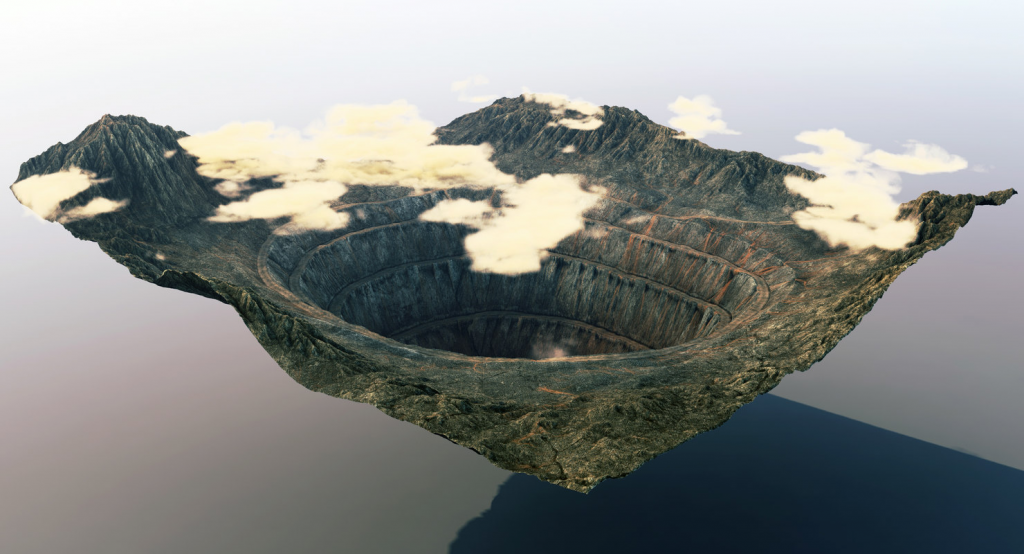It would be fair to assume that, for many people, Augmented Reality and Virtual Reality exist only in the realm of gaming and entertainment. Mention these technologies and images spring to mind of people walking down the sidewalk bumping into one another as they stare at their smart phones in an attempt to capture virtual anime characters. More than just games, however, AR and VR have real world applications that companies from retail to construction and even mining are utilizing to improve processes and boost sales!
Before proceeding, it may be helpful to distinguish the technologies from one another.
“Virtual reality is a computer generated stimulation,” explains Lorne Fade of VR Vision Group. “It is artificial and recreates a real life situation or environment. Users are immersed in the virtual world. Augmented reality uses layers of computer generated enhancements on top of existing reality. This makes it more meaningful when interacting with it.” [1]
For VR, think all-encompassing headsets; for AR, think using your phone to view the real world – with some enhancements.
Augmented Reality in Sales
The primary application of augmented reality is the insertion of virtual elements into the physical world. In doing so, companies are able to engage clients, offering them immediate visualizations and allowing them to interact with the product, while avoiding guesswork.
IKEA shoppers can point their phone at the corner of their living room to see what the latest lamp or chair would look like in their space, no tape measure required. Coca Cola does something similar, allowing retailers to envision various models of coolers in their store. Cover Girl extends the concept to one’s face, giving shoppers the opportunity to test various looks before purchase. Fashion retailer Zara ran a pilot project where passersby could use their phone to add strutting models to a storefront display, transforming it into a virtual catwalk. Pez put a new spin on an old favourite by tempting customers to utilize codes that unlock games. The possibilities are endless and forward thinking retailers are working with VR and AR development companies to formulate a game plan that suits their business. [2]
VR and AR in Construction
Walking down the street, it’s not unusual to encounter an artist’s rendering of a future retail or living space. The paintings are often lovely, inspiring many investors to act based upon them, but imagine how much more captivating it would be to experience the space virtually and conveniently. Sales teams are allowing for just that, utilizing platforms such as Facebook’s VR system Oculus Rift.
According to Turner Construction, their investment in the technology has paid off handsomely. Project managers enjoy hands-free access to documents when they’re on site and the enhanced ability for customers to visualize various plans has helped decrease the frequency of costly late stage client-revisions.
California’s Matterport builds VR technology specifically for construction projects, allowing team members to traverse not only time, but space.
“A lot of product and design teams are global now,” says the firm’s director of architecture, engineering and construction, John Chwalibog. “The project is in New York. An engineer might be in San Diego, an owner might be in Melbourne. Everyone can get together and do that virtual walk-through.” [3]
Virtual Reality in the Mining Industry
VR and AR are utilized across industries as educational and training tools and mining is no different. Controlled explosives are a fundamental part of mining, but human error in placement can prove costly and hazardous. Simulated Training Solutions, out of South Africa, have developed a virtual reality blast wall, which has proven a more effective method of training than traditional classroom techniques.
As Fade explains, the applications are numerous.
“Mine Life VR is a product created by LlamaZoo that provides a full spectrum of data sets and design iterations for mine planning. It allows to resource management and allocation of resources so mining companies can optimize their offerings. It also allows investors and community relations … to view a virtual tour of the mine site in real time 3D which before has never been provided.” [1]
As a sales tool, VR and AR technology are ascendant, but not yet ubiquitous. Today’s novelty, however, often becomes tomorrow’s standard. Readers of a certain age will remember that company websites were once considered optional. Progressive early-adopters will maximize these technologies, tailoring the specifics of their product offering to the mindsets of their customers to create a winning strategy.




